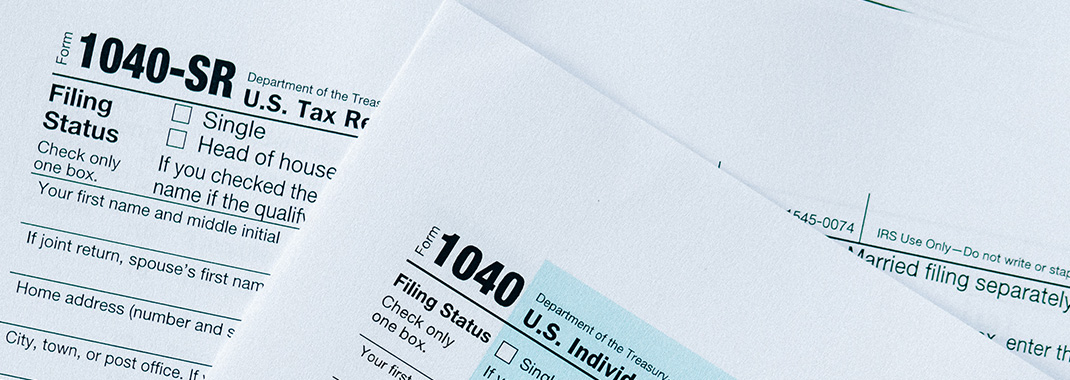Most products on this page are from partners who may compensate us. This may influence which products we write about and where and how they appear on the page. However, opinions expressed here are the author's alone, not those of any bank, credit card issuer, airline or hotel chain. Non-Monetized. The information related to Chase credit cards was collected by Slickdeals and has not been reviewed or provided by the issuer of these products. Product details may vary. Please see issuer website for current information. Slickdeals does not receive commission for these products/cards.
Under the American Rescue Plan Act of 2021, the maximum eligible expenses for the Child and Dependent Care Tax Credit (CDCTC) temporarily increased from $3,000 to up to $8,000 for each qualifying individual and from $6,000 to $16,000 for two or more qualifying individuals. However, that plan has since expired for 2022, which means the Child and Dependent Care Tax Credit will revert back to its original limits.
We'll cover what you need to know about child and dependent care tax credits this upcoming tax season, plus some helpful steps and tips for parents as they prepare for the approaching tax deadline.
What Is the Child and Dependent Care Tax Credit?
The Child and Dependent Care Tax Credit is a tax credit provision to help parents and guardians pay for child care or other care required for dependents.
Here are some key details about the credit:
- It's provided as a credit: You can claim a credit of up to $3,000 for one qualifying person, or $6,000 for two or more qualifying persons. Unlike filing child care expenses as deductions, qualifying taxpayers receive a credit applied directly to their income tax bill. To illustrate the difference, a $1,000 deduction filed on your return might only reduce your taxes by $200 or less, depending on your income tax bracket. However, a $1,000 tax credit can reduce your tax bill by $1,000.
- CDCTC vs. CTC: The Child and Dependent Care Tax Credit (CDCTC) is different from the Child Tax Credit (CTC). The latter is a tax credit provided to families with children under 17 years old, and comes with different criteria. Both credits can be claimed, providing the claimant meets all the criteria.
- No income restriction: While many tax breaks have income limits, the Child and Dependent Care Tax Credit can be claimed by most taxpayers regardless of income (except in 2021 when the income limit was $438,000). The higher your income, the lower your credit will be.
It's always a good idea to consult a tax professional to help you navigate tax credits and new laws.
Benefits of the Child and Dependent Care Credit
Here is a breakdown of the current Child and Dependent Care Tax Credit for the 2022 tax year. The credit you can claim will vary depending on the amount of dependents, your adjusted gross income, and qualifying care expenses.
| Children or Dependents | Qualified Expenses | Adjusted Gross Income | Maximum Percentage of Expenses | Maximum Credit |
|---|---|---|---|---|
|
1 |
Up to $3,000 |
Less than $15,000 $15,000 to $43,000 Greater than $43,000 |
35% 34% – 21% 20% |
$1,050 $1,020 – $630 $600 |
|
2 or more |
Up to $6,000 |
Less than $15,000 $15,000 to $43,000 Greater than $43,000 |
35% 34% – 21% 20% |
$2,100 $2,040 – $1,260 $1,200 |
Who Qualifies for the Child and Dependent Care Credit?
According to the Internal Revenue Service (IRS), a person filing taxes can qualify for a Child and Dependent Care Credit based on the following criteria:
- Paid someone to care for their child or other dependent under 13 years old, or paid for someone to care for a spouse or dependent unable to care for themself. AND
- Required the hired care in order to work or while seeking employment.
- Care spent must be less than your total income for the year. If married and filing joint returns, the care spent must be less than the lower-earning spouse's income.
- Person hired is not a spouse, dependent, parent of a dependent, or minor child.
- If the taxpayer is married, they must file jointly with their spouse.
- Taxpayer must have earned income to claim the credit.
- Person hired for care must have a Taxpayer Identification Number (TIN) in the form of either a Social Security number (SSN) or an Employer Identification Number (EIN).
Expenses That Qualify
While many expenses can qualify for the Child and Dependent Care Tax Credit, double check that the expenses you paid for are eligible for the credit.
What type of care qualifies for the credit? Here are a few examples:
- Professional care providers: These include daycare, vacation daycare, summer camps, care centers, and in-home care providers.
- Care by paid relatives: A relative paid to care for a child or dependent can also qualify, provided it is not a spouse of the dependent, an immediate family member of the taxpayer filing for the credit, a sibling, or a minor child.
- Babysitters and after-school care: Expenses towards a sitter or nanny can also qualify, as it enables you to continue working.
There may be other services that qualify. The main determining factor is whether that service provides childcare while the claimant is at work or seeking work.
Expenses That Do Not Qualify
Expenses for tutoring, schooling, overnight camps, and sports activities do not qualify because the intent is not to provide care so the parent can work.
How to Calculate the Credit
Calculating the credit depends on your income and the total expenses. But there's also a cap set by the IRS of a maximum allowable expense total. Here is a general guide on how to calculate your credit:
- Total up your child or dependent care expenses per child or dependent.
- Subtract any stipend provided by your employer for child care or the fair market value of employer-provided daycare facilities.
- Subtract any pre-tax withholdings or contributions made under an arrangement for dependent care flexible spending.
- Compare the resulting figure with your income—and your spouse’s income if applicable—and choose the smallest amount as your “allowable expenses.”
- The credit will be a percentage of the resulting figure—it ranges from 20% to 35%.
Additional details affecting the exact figure can be found on the IRS’s help page.
How to Claim the Credit
To claim the Child and Dependent Care Tax Credit:
- Fill out your regular tax return. Use Form 1040 or other tax form, depending on your status, to file a tax return.
- Determine if you qualify. The IRS help page contains requirements for filing, how to determine eligibility, checklists to identify care providers, income requirements, proof of work-related expenses, and a handy chart for determining whether you can make a claim.
- Gather records. You should keep accurate records of any work-related expenses and whatever dependent care benefits you received during the year in which you are filing.
- If you are filing for credit for the care of a disabled child, dependent, or spouse, your records should demonstrate the nature of the disability and the length of time they have been affected.
- You will also need the care provider’s name, address, and taxpayer identification number.
- Fill out Form 2441. Follow the instructions and attach it to your Form 1040. It includes fields to help you calculate your available credit.
- Calculate your credit. On Schedule 3 (Form 1040), Additional Credits and Payments, use line 2 to enter the total credit claimed.
Unique Circumstances
There are some situations where a child or dependent may not reside in a traditional household. The Child and Dependent Care Tax Credit may be available to people with special or unique circumstances. Here are some examples.
Grandparents
Grandparents raising their grandchildren may qualify for the Child and Dependent Care Tax Credit if their grandchildren live with them for more than half the year and their parents do not claim them as dependents. Other dependents may also qualify, even adults if they have disabilities or require care services.
To qualify, grandparents would need earned income, are required to file jointly as a couple if married, and other criteria may factor as well.
Divorced or Separated Spouses
Only one spouse may claim tax credits if they're divorced or legally separated. Generally, it would be the custodial parent in such an arrangement. If the child lived with both parents equally throughout the year, the parent with the higher adjusted gross income would claim the credit.
If the noncustodial parent cannot claim the child as a dependent, the child may still be treated as a qualifying person if they meet the criteria. See the IRS Publication 503, section on Child and Dependent Care Expenses.
Deceased Spouse
If a claimant’s spouse passed away during the filing year and they haven’t remarried, they can still file a joint return to claim the credit. If they remarry during the filing year, they can still claim the credit on their deceased spouse's return.
Other Circumstances That Affect a Claim
Because claimants need to meet certain criteria, there may be questions about how specific factors can affect a claim. This is especially true for families whose situation doesn’t exactly match a bulleted list of criteria. Here are some examples:
- Disabled adults with an income. A credit can be claimed for the care of disabled adults even if they do not qualify as a dependent because of their gross income.
- A disabled spouse. In cases where a spouse is claimed as a disabled adult, the IRS waives the requirement for the spouse to have earned income on a joint tax return.
- Spouses enrolled as students. If a claimant’s spouse was enrolled as a full-time student attending college or university for a minimum of five months in the tax year, the IRS considers that as having earned income for each of those months.
The Bottom Line
The tax credit can be confusing, especially if your situation isn't straightforward. It's always a good idea to consult a tax professional to guide you through the process.
Frequently Asked Questions
-
According to the IRS, yes, payments made to relatives can count as work-related expenses even if they live in your household. The exception is if they claim your mother or that relative as a dependent, the expense does not qualify.
-
No, the CTC and the CDCTC are two different things. Even though both provisions can benefit those with children, their purposes and requirements are unique. The CDCTC is designed for people who want to reduce their tax burden by claiming some of their childcare expenses, while the CTC is a credit provided to people with children—whether or not they have childcare expenses.
-
Yes, you can claim both the CTC and the CDTC as long as you meet the criteria for both provisions.


















